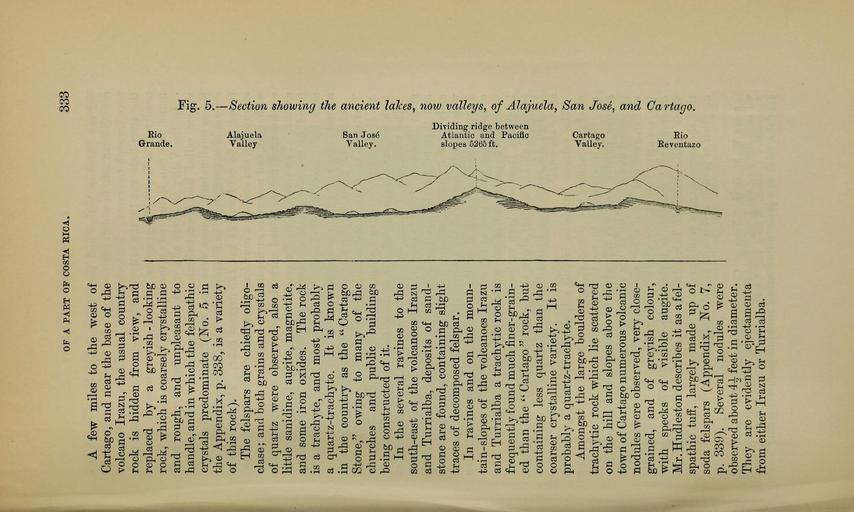MAKE A MEME
View Large Image

| View Original: | The_Quarterly_journal_of_the_Geological_Society_of_London_(13859877545).jpg (2056x1232) | |||
| Download: | Original | Medium | Small | Thumb |
| Courtesy of: | commons.wikimedia.org | More Like This | ||
| Keywords: The Quarterly journal of the Geological Society of London (13859877545).jpg OF A PAKT OP COSTA RICA <br> 333 <br> A few miles to the west of <br> Cartago and near the base of the <br> ˘volcano Irazu the usual country <br> rock is hidden from view and <br> replaced by a greyish - looking <br> rock which is coarsely crystalline <br> and rough and unpleasant to <br> handle and in which the felspathic <br> crystals predominate No 5 in <br> the Appendix p 338 is a variety <br> of this rock <br> The felspars are chiefly oligo- <br> clase; and both grains and crystals <br> of quartz were observed also a <br> little sanidine augite magnetite <br> and some iron oxides The rock <br> is a trachyte and most probably <br> a quartz-trachyte It is known <br> in the country as the Cartago <br> Stone owing to many of the <br> churches and public buildings <br> being constructed of it <br> In the several ravines to the <br> south-east of the volcanoes Irazu <br> and Turrialba deposits of sand- <br> stone are found containing slight <br> traces of decomposed felspar <br> In ravines and on the moun- <br> tain-slopes of the volcanoes Irazu <br> and Turrialba a trachytic rock is <br> frequently found much finer-grain- <br> ed than the Cartago rock but <br> containing less quartz than the <br> coarser crystalline variety It is <br> probably a quartz-trachyte <br> Amongst the large boulders of <br> trachytic rock which lie scattered <br> on the hill and slopes above the <br> town of Cartago numerous volcanic <br> nodules were observed very close- <br> grained and of greyish colour <br> with specks of visible augite <br> Mr Hudleston describes it as a fel- <br> spathic tuff largely made up of <br> soda felspars Appendix No 7 <br> p 339 Several nodules were <br> observed about 4-1- feet in diameter <br> They are evidently ejectamenta <br> from either Irazu or Turrialba <br> Be <br> ÂŁ3 <br> I <br> O <br> S3 <br> S <br> S § 36936126 113692 51125 Page 333 Text 38 http //www biodiversitylibrary org/page/36936126 1882 Geological Society of London NameFound Turrialba NameConfirmed Turrialba NameBankID 5142375 Biodiversity Heritage Library The Quarterly journal of the Geological Society of London v 38 1882 Geology Periodicals Smithsonian Libraries bhl page 36936126 dc identifier http //biodiversitylibrary org/page/36936126 smithsonian libraries Information field Flickr posted date ISOdate 2014-04-15 Check categories 2015 August 26 CC-BY-2 0 BioDivLibrary https //flickr com/photos/61021753 N02/13859877545 2015-08-26 07 56 44 cc-by-2 0 PD-old-70-1923 The Quarterly journal of the Geological Society of London 1882 Photos uploaded from Flickr by Fæ using a script | ||||